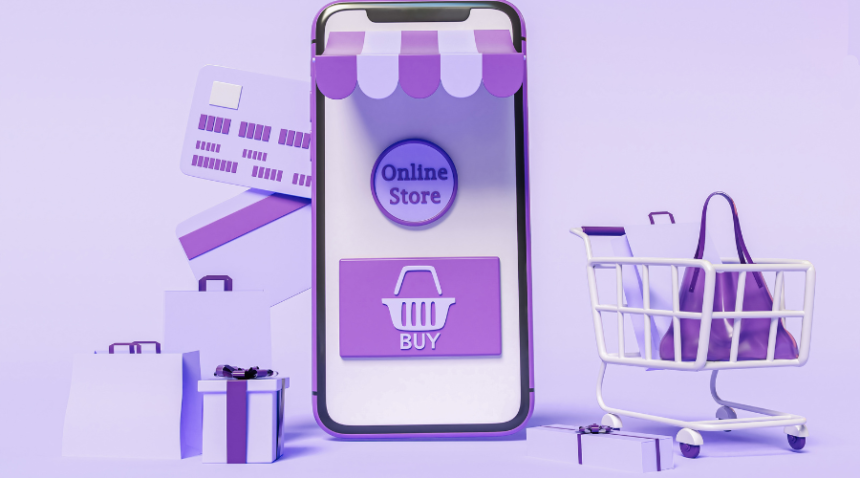Running an e-commerce business in India is like riding a rocket—fast-paced, thrilling, and full of potential. But with millions of shoppers hopping between platforms, sticking to just one sales channel can feel like leaving money on the table. That’s where multi-channel selling swoops in. It’s all about spreading your wings across marketplaces, social media, and your website to reach more customers. If you’re wondering how this can turbocharge your e-commerce game, let’s unpack the perks in an honest and relatable way.
What’s Multi-Channel Selling?
Picture this: you’re selling handmade kurtas. More than just selling on your site, you are available on Amazon, Flipkart, Instagram, and WhatsApp. This is how multi-channel selling looks: you sell your products using different channels. It is about selling where your customers are instead of just one place. For example, this fantastic concept can help attract a vast and diverse crowd in India from e-commerce, which is projected to reach $200 billion by 2026.
Reach More Shoppers, Everywhere
India’s online shoppers aren’t loyal to one platform—they’re all over the place. Some hunt deals on Flipkart during Big Billion Days, others scroll Instagram for trendy finds, and plenty still trust their local WhatsApp groups for recommendations. Multi-channel selling puts you in front of all these folks. A 2023 report showed that 60% of Indian buyers shop across multiple platforms before deciding—by being on more than one, you’re catching them wherever they land.
Say you sell skincare. Listing on Amazon grabs the deal-seekers, while Instagram reels snag the Gen Z crowd obsessed with aesthetics. Your website? That’s for loyal fans who love your brand story. More channels mean more eyeballs—and more sales.
Also Read: B2C Websites: Tips for Creating a User-Friendly and Engaging Ecommerce Platform
Boost Sales Without Breaking a Sweat
Here’s the fun part: multi-channel selling can juice up your revenue without reinventing the wheel. Each platform has its vibe—Flipkart’s got scale, Myntra’s got fashion cred, and Facebook Marketplace has bargain hunters. By diversifying, you’re not just relying on one stream. During Diwali 2023, multi-channel sellers saw sales spike 30% higher than single-channel peers, per industry stats. Why? They hit festive shoppers across every corner of the internet.
It’s like fishing with multiple nets—you’re bound to catch more. A jewellery seller might move essential pieces on Meesho but showcase premium designs on their site: different audiences, different wins, same business.
Build Trust and Brand Love
For first-time buyers, online shopping can often seem unsafe. When a product comes on platforms like Amazon or Snapdeal, it gets instant credibility with the customer who proclaims, “If they’re here, they must be legit.” Pair that with a good social media presence where you can interact, share reviews, and even personalize. You are no longer a faceless store but a brand that customers recognize.
Take a small spice seller from Kerala. Listing on Flipkart gets them in front of urban buyers, while Instagram stories of farm-fresh grinding win hearts. Over time, that multi-channel glow turns one-time buyers into regulars who trust your name.
Also Read: Building Trust in Your Jewellery E-commerce Business with a Secure Payment System in India
Dodge the Risk of One-Channel Woes
Putting all your eggs in one basket? Risky move. If Amazon tweaks its algorithm or your website crashes during a sale, you’re toast. Multi-channel selling spreads that risk. If one platform flops, say, a social media ad ban hits, you still have Flipkart or WhatsApp humming along. It’s a safety net that keeps your cash flowing, no matter what.
During the 2022 festive rush, some sellers got burned when a single marketplace hiked fees. Multi-channel pros? They pivoted to other platforms and kept rolling. It’s peace of mind you can’t put a price on.
Learn What Your Customers Love
Every channel uses sales trends, customer preferences, and peak times data. Selling on multiple platforms is like having a front-row seat to what clicks. Maybe your sports gear flies on Flipkart but flops on Instagram, and now you know where to double down. Tools like Google Analytics or marketplace dashboards make it easy to spot patterns. A 2024 survey found that multi-channel sellers tweak their stock 20% faster than single-channel ones, staying ahead of the curve.
A toy seller might see kids’ puzzles sell big on their site but not on Meesho. That intel shapes more brilliant inventory and marketing moves.
Challenges to Watch
It’s not all rosy. Managing stock across platforms can get messy, and overselling is a headache if your sync’s off. Tools like Zoho Inventory or Sellbrite can help but cost a bit. Each channel has its rules. Flipkart’s fees differ from Instagram’s ad spends. And keeping your brand voice steady across all? That takes effort. Start small, two or three channels, then scale as you get the hang of it.
Real Wins in Action
Take a Bangalore-based electronics seller. They started on their site, added Amazon, and later jumped on WhatsApp for bulk deals. Result? Revenue doubled in a year, with Amazon snagging newbies and WhatsApp locking in wholesalers. Alternatively, a saree brand, Flipkart, for volume, and Instagram for buzz saw a 40% sales lift during Rakhi. Multi-channel isn’t theory; it’s results.
The Future’s Multi-Channel
India’s e-commerce boom isn’t slowing festivals; rural shoppers and quick commerce fuel it. Platforms like JioMart and ONDC are joining the fray, giving you more selling lanes. With 5G rolling out, expect faster, slicker shopping perfect for multi-channel plays. A McKinsey report predicts 70% of Indian e-commerce will be multi-channel by 2027. Get in now, and you’re ahead.
Wrap-Up: Your Growth Hack
Multi-channel sales are more than a strategy—they’re a lifeline for e-commerce in India. They expand reach, boost sales, strengthen bonds, and keep you agile. Yes, it’s a juggling act, but the payoff’s huge. With a digital marketing agency, pick a few platforms, test the waters, and watch your business thrive. In this vibrant market, being everywhere isn’t optional—it’s essential.


Leave a Reply
You must be logged in to post a comment.